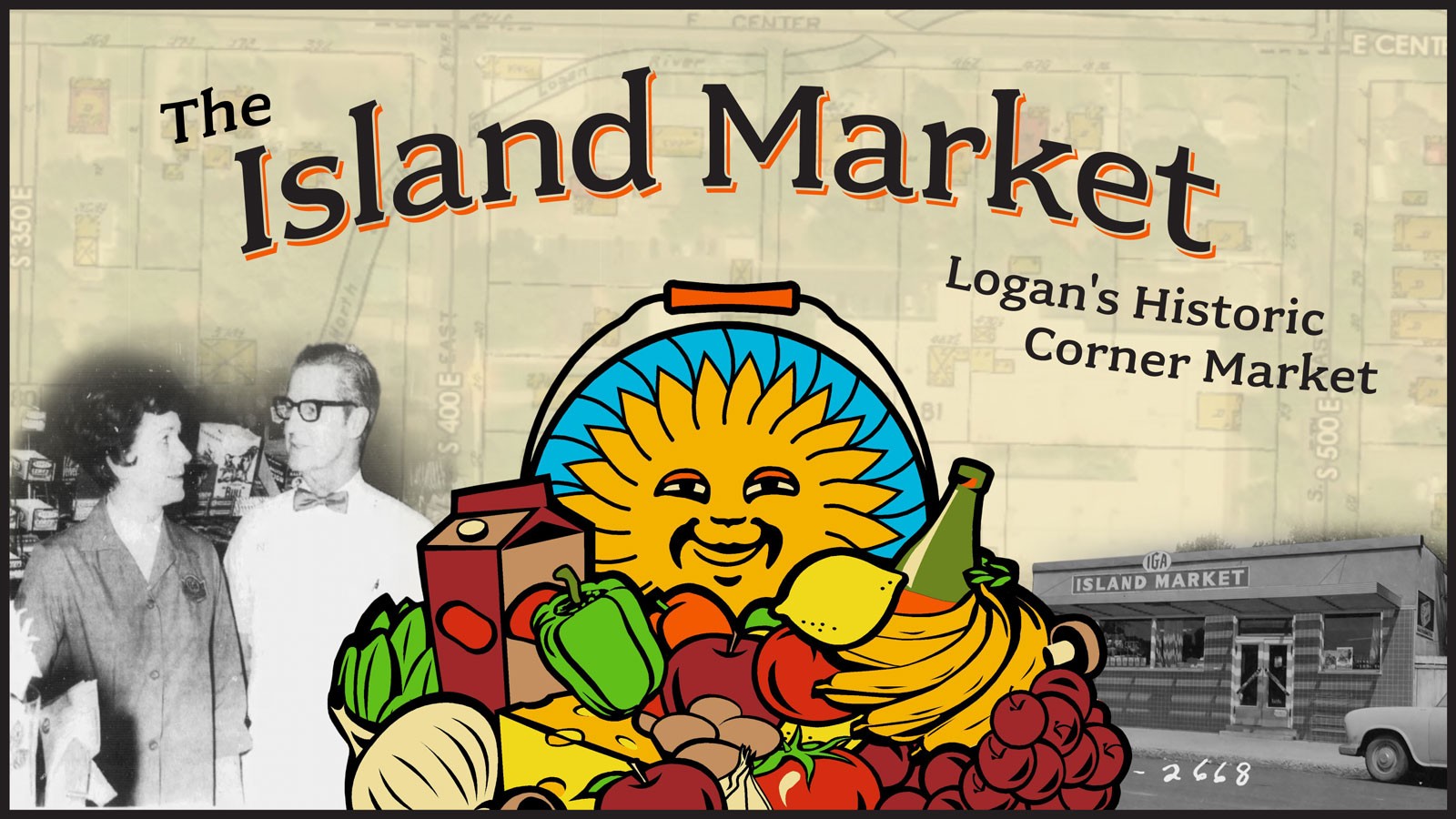Digital Exhibit Showing History of Island Market Now Online
By Preston Waddoups |
A digital exhibit of the centurylong history of one of Logan's last corner grocery markets is available now online.
The Logan Island, the low-lying area at the mouth of the canyon located just south of Utah State University’s Logan campus, is home to the Island Market, a corner grocery store on East Center Street. The locally owned corner store is popular among students and Island residents alike, and has participated in recent student events like Nourishing Nordics and The Block Film and Art Festival. It’s less known that the market is over 100 years old and has gone through more than 10 different owners (and about as many names).
The long and complicated story of the Island Market was uncovered by eight undergraduate researchers in Rebecca Andersen’s spring 2022 public history course, and the project has a history of its own.
In 2021, Steven Emile and Mark Lunt, the General Manager and owner of the Island Market respectively, reached out to the History Department at USU in hopes of learning about the store’s past.
Following Emile’s request, Andersen, a lecturer who oversees the History Department’s public history track, went to Special Collections & Archives Photograph Curator and Instruction Coordinator Daniel Davis to see if the university had any resources relevant to the Island Market. Davis found several photos of the store building over the years, and Andersen decided to focus her upcoming public history course on further researching the Island Market.
With the help and resources of the USU Library’s Special Collections & Archives, the Cache County Recorder’s Office, open-source digital newspaper repositories, and Logan residents with memories of the Island Market, the student researchers were able to produce a series of detailed narrative essays and presentations covering the Island Market’s history, its place in the Logan Island community, and the economic and cultural circumstances that have affected the store from the invention of the refrigerator to the arrival of Walmart in Cache Valley. These presentations were showcased to Emile, Davis, Digital Projects Manager Brittany Bertazon, and USU Libraries Dean Jennifer Duncan, at the end of the semester.
Continuing the project after the public history course’s close, the Digital Initiatives Unit at the library hired a student researcher from Andersen’s class, Sydney Lehenbauer, to work as exhibit curator and lead researcher for a digital exhibit that would connect and expand on the research done in the public history course, creating a final product that would be comprehensive and accessible for historians and the general public alike.
Over the summer, Lehenbauer worked with Digital Initiatives to create an exhibit complete with historical maps, advertisements, newspaper clippings and photos. She writes that the project was similar to an internship for her, as she plans to continue exploring the worlds of public and digital history following her graduation. Her work with the library’s Digital Initiatives Unit also resulted in her obtaining a more long-term and formal position as Digital Projects Assistant.
A key part of the project’s research was uncovering the past of the building itself, along with finding its names and owners. The student researchers found photos of the building over the years using the Cache County Tax Assessment Photograph Collection, a part of the USU Digital History Collections that features photos of Cache County homes and businesses taken for tax purposes from the 1930s to the 1970s.
These photos helped reveal that following its short debut as a butcher’s shop in 1920, the building has been a corner grocery store nearly continuously up to the present day, only interrupted by renovations and a period of vacancy at the beginning of the Great Depression. The market’s renovations brought not only modern styles, but new technologies and more space, as the current market is four times larger than it originally was in 1919.
However, looking beyond the store’s history as solely a building and a business, the exhibit also examines the market as a hub for community connections and shows the ways in which the small market has maintained this role while adapting to a changing food industry and a changing Logan. Included in the exhibit are the stories of the Island Market’s softball team, its appearances in USU student newspapers, its involvement in campus and city events, and its experiences during the COVID-19 pandemic. The collaboration between students, the Island Market, and the Logan community has helped create an understanding of past connections between these same entities.
The exhibit is now published and accessible online, with plans to display a QR code linking to the digital exhibit at the Island Market itself. Even though the project is published, it is still continuing, with Digital Initiatives seeking memories, stories and photos related to the Island Market from the community at large. People who have anything they’d like to share can submit them through an online form.
WRITER
Preston Waddoups
preston.waddoups@usu.edu
CONTACT
Kellianne Gammill
Public Relations Specialist
University Libraries
(435) 797-0555
kellianne.gammill@usu.edu
ADDITIONAL RESOURCES
TOPICS
Business 155stories History 139stories Exhibitions 128storiesComments and questions regarding this article may be directed to the contact person listed on this page.







